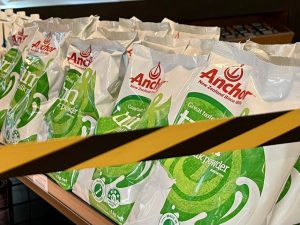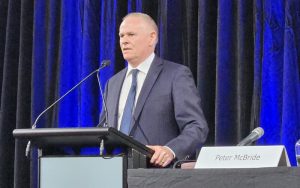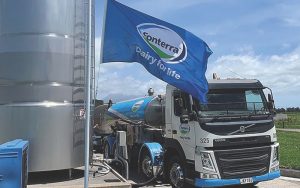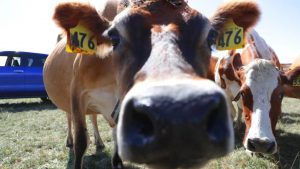
From Victoria’s Murray Goulburn to Hokitika’s Westland Milk, high debt has left co-ops vulnerable and allowed foreign buyers to swoop.
When a co-op strikes a rough patch, capital – or the lack of it – seems to be the culprit. Which raises the question: after a century and half of Kiwi agricultural co-ops, does the model still stack up?
Co-ops are prevalent in New Zealand agriculture and around the world, as the structure gives farmers the kind of heft required to get the best price possible for their products.
They can also help cut the cost of farm inputs, such as fertiliser, by taking out the middleman.
The trick is maintaining stringent financial discipline to ensure sufficient funds are on hand for capital expenditure.
Murray Goulburn was Australia’s biggest dairy co-operative, but looked likely to disappear under a mountain of debt before Canada’s Saputo took it over last year.
The Aussie co-op’s downfall came from paying a milk price that was too high and did not reflect world dairy prices at the time.
Closer to home, meat processing giant Silver Fern Farms was facing its own capital management problems before Chinese company Shanghai Maling injected $261 million into the company to form a 50/50 joint venture in 2016.
Now, Silver Fern Farms – the co-op – is debt-free, but arguably has less control over its destiny.
Then there have been Fonterra’s issues with its 18.8 per cent investment in Chinese infant formula maker Beingmate, which it had to write down by $405m last year.
Now the giant co-op faces the challenge of reducing its $7.4 billion debt. Partly as a result, Fonterra did not pay an interim dividend this year and a final dividend is looking doubtful.
More recently, issues arising from Westland Milk’s heavy capital expenditure and expansion into Canterbury have seen Chinese dairy giant Yili appear on the scene.
If all goes to plan, a $588m deal will result in Yili paying $3.41 a share to Westland Milk’s farmer-shareholders, and taking on Westland’s debt and liabilities. While the money will get the co-op out of a hole, the deal will mean the loss an all-New Zealand-owned entity.
As Mark Brown, chief investment officer at Devon Funds, sees it, events of the past few years highlight the difficulties that co-ops can face.
“I believe that they are somewhat archaic corporate structures,” he says.
In theory, their growth is limited to the cash they retain after paying out dividends.
In Fonterra’s case, the co-op had global growth ambitions but was held back by its lack of access to capital, says Brown.
“Once they have exhausted their debt facilities, access to equity is limited to the minority non-farmer share pool, given that farmers – the majority shareholders – have no appetite to recapitalise the company,” Brown says.
In Westland’s case, farmers were simply unable to supply the capital their co-op needed.
Brown says Fonterra’s suspension of its interim dividend “gives me no confidence that they are in significantly better shape”.
Defending the co-ops
It’s no surprise that Craig Presland, chief executive of the organisation which represents most of New Zealand’s co-ops, is quick to defend the model.
He points out that New Zealand is well populated with co-ops, and that together they represent about a fifth of the country’s GDP.
Presland says they have also stood the test of time: two-thirds of the 65 members of Co-operative Business NZ are more than 25 years old, and five of them have been around for more than a century.
He says they represent trusted products, brands and services, with reputations that have been built up over the decades.
“In terms of endurance, it’s been an impressive record for the co-ops in this country over the long term,” says Presland, who argues that the model offers longevity.
“That’s what Kiwis want. They want trust in organisations that are not here today and gone tomorrow.”
Presland says it would be a sad day for New Zealand if ownership of Westland – and its future profits – went offshore.
But he says co-ops face a fine balance between what they pay their members and how much money they hold onto to fund future growth opportunities.
Capital structure
“Co-ops raise funds either from their members or from the bank or through retained earnings,” says Presland.
“You don’t find many co-ops go under in this country.”
Presland, who has spent 12 years in the dairy industry, says the demise of the dairy co-op has been more evident in Australia, brought on partly by the constant threat of drought.
By his reckoning there’s only one Australian dairy co-op left – Norco, based in Lismore near the border of Queensland and New South Wales.
Some of the smaller Aussie co-ops have gone the same way as Murray Goulburn and have been sold to overseas buyers.
“It’s sad what has happened to their dairy industry, not only for those farmers facing drought, but also the overseas ownership,” Presland says.
But as he sees it, in this country the co-operative model has stood the test of time.
In contrast, “under the investor-only model, investors can be here today and gone tomorrow.”
He plays up the fact that with a co-op, profits generated locally stay in the area. “The co-op model with member ownership means profits are retained locally.”
And he says co-ops are no less fleet of foot than their corporate cousins. “I think our co-operatives, large and small, are very strongly and commercially driven.
“Even the Fonterras of this world can move quickly when they need to in response to market opportunity and threats, as they come along.”
Dekker on dairy
Arie Dekker, head of institutional research at FNZC and an occasional Fonterra critic, says there is nothing wrong with the co-op model.
They are a valid structure, he says, and there are many successful examples of co-operatives that have stuck to their core businesses and executed well.
“There is no reason why co-ops should not be a valid approach,” he says. “I know a number of them have had issues, but I don’t think it’s the model, per se, that is the problem.”
Dairy co-ops typically pool milk together and farmers put capital into the co-op, with the priority being to collect their milk – and pay the best price possible.
Dekker points out that milk production in New Zealand has been growing very strongly for a couple of decades now, which has required co-ops to invest in plant to keep up.
Problems arise, he says, when the dairy co-ops move away from what they were set up to do.
“But that’s not a problem with the co-operative model itself – it’s more about extending out beyond the basis on which these co-ops have been set up.”
Any co-operative that is trying to grow beyond its core also faces a competing need, which is to make sure it has the capacity to handle a milk supply that – in New Zealand’s case – has been growing.
In Fonterra’s nearly 20-year history, says Dekker, it has retained very little in earnings.
In order for a farmer to supply Fonterra, they need to buy shares in the co-op. And when they want to increase production, they have to buy more shares. Understandably, they expect a return on that capital they have invested.
“They [farmers] have not really put through that capital for the pursuit of some of those things that Fonterra looked to do offshore, in the case of China farms and Beingmate.”
Corporate mistakes
Stock exchange-listed corporates do make mistakes but when they do, it is relatively straightforward to raise capital to repair their balance sheet, through a rights issues.
Co-ops don’t have so many options.
Dekker says investments don’t always go to plan, “but your the ability to ride through those bumps is less if you don’t have the kind of access to capital”.
“You can really see it in the case of Beingmate – whether that was a good investment or not.
“Certainly, looking to get a stake in a very large market and a large category – infant formula – the co-op did not have the ability to have more control over its destiny in terms of that investment by taking a controlling stake.
“It took a minority stake [in Beingmate] – less than 20 per cent – so investing outside the core, from a constrained capital base, and arguably being forced to take less than optimal positions in terms of a minority, those are the kinds of problems that you can have when there is a non- alignment between your strategy and your capital base.”
Co-ops are essentially closed off to outside investors. While Fonterra Shareholders’ Fund units are listed on the Stock Exchange, that only gives investors access to its dividend flow – nothing else.
But Dekker says Fonterra’s farmer-only ownership is not a frustration for the investment community.
“Fonterra has been around for a long time as a co-op and ultimately, it’s the owners’ choice.”
He stresses that there is nothing wrong with the co-op model. “There are some successful ones – [supermarket co-op] Foodstuffs for example – so I don’t think the co-operative model is fundamentally flawed”.
“Where you get ambitions that are out of line with the capacity to see it through in terms of capital, or poor decision making, that combination has seen some issues,” he says.
“But co-ops that stick to their knitting, who execute well, can be very successful.”
What farmers say
Federated Farmers dairy chairman Chris Lewis says co-operatives are a big part of New Zealand agriculture, from fertiliser, to farm suppliers, to vet clubs.
The co-operative concept means farmers can supply raw materials at the right time and at the right price. On the other side of the coin, farmers can buy goods and services through co-ops to cut out the middleman.
He says problems emerge when co-ops promise more than they can deliver.
“Where they under-deliver or over-promise, they have to play a game of politics to right it,” says Lewis.
He adds that farmers’ expectations of co-ops are some times too high.
But he agrees with Presland: it’s all about finding the right balance between how much money farmers are paid and how much is retained.
Farmers, too, can be guilty of taking a short-term view, while the investors looking to take over co-ops are playing the long game.
“For co-ops to be successful in New Zealand, they have got to be many things, but the first priority they have got is to protect the balance sheet and the members’ investment, and to be ready to ward off the attentions of other companies or investors.”
Lewis, who supplies the Talleys-controlled Open Country Dairy, backs Fonterra.
Fonterra’s reason for being is to pay its farmers the best price it can for their milk, thereby setting the benchmark for the rest of the sector, he says. That means suppliers and non-suppliers alike have a vested interest in seeing Fonterra do well.
“As an Open Country Supplier, I still want Fonterra to be strong.
“I’m very pro-Fonterra – with them being the dominant player New Zealand, it serves the farmers’ purpose very well.
“We want Fonterra to remain strong for the benefit of all farmers,” Lewis says. “But they have to put the home farm first, don’t they?”
NZ dairy’s backbone
Co-ops have been the backbone of the New Zealand dairy industry since its inception in the 1870s.
The first dairy co-operative was established in Otago in 1871, and by 1920 there were 600 dairy processing factories of which about 85 per cent were owned by co-operatives.
After WWII, better transport, improved processing technologies and energy systems led to consolidation. The co-operatives merged to become larger and fewer in number.
By the end of the 1990s there were just four left: Waikato-based New Zealand Dairy Group; the Taranaki-based Kiwi Co-operative Dairies; Westland Milk Products; and Tatua Co-operative Dairy Co.
Fonterra was formed in 2001 from the merger of the two largest co-operatives, NZ Dairy and Kiwi Co-operative, together with the New Zealand Dairy Board. Westland and Tatua opted to go it alone.
Today, Westland is the second biggest co-op after Fonterra, with 429 members. Tatua is third with 107.
While corporate dairy companies have made inroads, together, the co-ops still process more than 80 per cent of New Zealand’s dairy output.

























